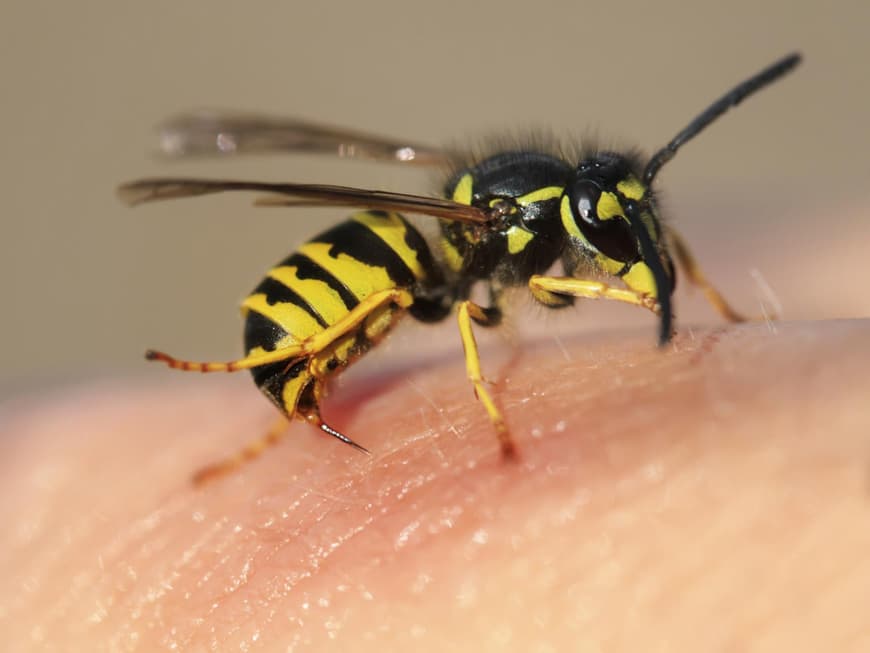
Mosquito bite
The mosquito leaves a small wheal on our skin, which has a glassy, light-colored bite mark. Under the skin, we usually feel a pea-sized thickening with a lump. Although a mosquito bite does not usually hurt, it is very itchy and the skin at the site often becomes red and warm. In tropical countries, mosquitoes can also transmit dangerous diseases such as malaria.
Blackfly
Have you ever heard of the blackfly? Unlike mosquitoes, they do not bite their victims with a proboscis, but instead make a small wound in the skin. There it sucks blood and its bite is quite painful. Small hemorrhages create a blue-black stain that gets bigger every day. To make matters worse, the blackfly flies silently at its victims.
Blackfly
These pests are often on the move on warm and humid days and particularly like to hang around near water or pastures. A horsefly bite is extremely painful, swells up and can be recognized by the typical red wheal. This is usually significantly larger than a mosquito bite. There is often a small depression in the middle of the swollen area.
Wasp
A wasp sting is very painful, especially at the beginning. However, the pain usually subsides after a few minutes. The skin also swells quickly at first and is reddened. In the case of a wasp sting, the insect's stinger does not usually remain in the skin, as wasps can pull their stingers out again.
Also interesting: Plants against wasps: Which ones really help
>> The best plants against mosquitoes and wasps
Bee
The small fluffy insect only stings when it feels threatened. After the sting, the bee's stinger gets stuck in the skin and the insect dies. You should carefully remove the stinger as quickly as possible using your fingers or tweezers. The area where the sting is located will be red and swollen. The affected area of skin is also itchy and very painful.
Flea
Although fleas mainly prey on animals, sometimes we humans are also affected. After a flea bite, red spots appear on the skin, which are often close together and very itchy. Do not scratch under any circumstances, as this can lead to infection!
Tick
A tick bite, often referred to colloquially as a tick bite, is easy to identify: The tick is usually still in the skin and sucks blood. However, if it is not discovered early, it can remain on the body for up to 15 days. You should therefore always check yourself for ticks. Even if the tick has been removed, the bite must remain under observation, as ticks transmit dangerous diseases such as Lyme disease or tick-borne encephalitis (TBE). As soon as a ring forms around the reddened area, which is about the size of a coin and gets bigger and bigger, this can be a sign of Lyme disease. As a general rule, always consult a doctor if you are unsure.
Distinguishing between reactions to insect bites
There are three levels of insect bites. Firstly, there are the so-called local reactions, which affect an area of skin smaller than ten centimetres. They are usually accompanied by redness, swelling and itching. As a rule, however, the symptoms should have subsided after 24 hours. A local reaction to a sting often affects a much larger area of skin. It can also lead to dizziness, nausea or swelling of the surrounding joints. An allergic reaction often leads to shortness of breath. Allergic reactions should be taken very seriously, so you should consult a doctor immediately, as allergic reactions can be life-threatening.
Date: 18.08.2020
Author: Ilka-Marie Hagenbücher
